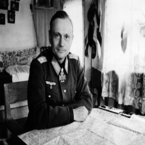xhoel
Posts: 3219
Joined: 6/24/2017
From: Germany
Status: offline

|
AGN
The offensive for Pskov:
On July 17th 1941 the morning sky was filled with the buzzing of aircraft engines. One by one Stukas and Ju 88As took off from our forward airfields and started flying towards the Velikaya river. Troops of the 11th Soviet Army defending the gap between the rivers Velikaya and Loknya were awoken by the sound of Stuka sirens which were followed by huge explosions and screams of wounded men. The Soviet defenders were not left a moment of respite, as once the first wave of our dive bombers had dropped their bombs, the high altitude Ju88As showed up, hitting everything they could identify as a viable target. Ammo depot, gun emplacements, telephone lines and secondary trenches were the main targets. At 6:00 am, our forward observers called for precise artillery fire on already identified Soviet strongpoints. What followed was a spectacle of explosions that ran for 20 minutes straight. The whole artillery of the 16th Army was committed to the task, with a dedication to be admired. At 6:30 AM once the dust had settled our infantry moved forward. The assault was difficult as the Soviets had fortified their positions well and fought resiliently. In the end however after bitterer fighting the gap between the two rivers was in our hands. What followed after the initial assault was more heavy fighting that had to be endured by the men of the 16th Army. 10 miles north of their first defensive belt the Soviet 11th Army had established a secondary defensive line, foreseeing that our goal would be to cut off Pskov coming from this direction. The X Corps of Generaloberst Christian Hansen proved more than capable of breaching the Soviet defenses here even though they faced very heavy resistance.
Stukas flying to their designated targets:

After the collapse of Soviet defenses what laid ahead of us was open ground, ideal terrain for the armored units of the 4th Panzer Group, which wasted no time into advancing to the Soviet rear encountering only light resistance. Due to the immense outer perimeter of the Pskov pocket (150 miles only the east side), GO Hoepner requested additional armored formations to guarantee that the Soviets could not break out, since based on radio intercepts and intelligence reports the strongest Soviet units are concentrated in this sector and could, if poorly screened, slip out to the east, something that could delay the advance towards Leningrad for weeks. Seeing how the offensive in the sector of AGC has been delayed for another week, the OKH granted the request ordering the XXXIX Panzer Corps (green) and the XIV Panzer Corps (blue) to move north. After their arrival the pocket was sealed almost hermetically, the only worry being the northern side which is defended by the 1st Regiment of the Wiking SS Division. Should the regiment hold, then the fate of the Pskov pocket will be sealed, which would not only mean the elimination of around 28 divisions/brigades trapped inside it, but it would also mean that the Soviets will have to pull troops from other sectors in order to form a defensive line on the Luga, which at this time is completely defensless. This would mean a weakening of Soviet positions at the landbridge which would help our offensive plans in the AGC sector.
Soviet defenses at Pskov and envisioned attack axis:

Pskov pocket after German moves:

Meanwhile the XXVI Corps has entered Estonia and will be pushing north to capture Tallinn and Narva in order to draw Soviet defenders to the area.
General overview of AGN sector after German moves:

 Attachment (1) Attachment (1)
< Message edited by xhoel -- 5/7/2019 8:23:46 PM >
_____________________________
|
 Printable Version
Printable Version

































































 New Messages
New Messages No New Messages
No New Messages Hot Topic w/ New Messages
Hot Topic w/ New Messages Hot Topic w/o New Messages
Hot Topic w/o New Messages Locked w/ New Messages
Locked w/ New Messages Locked w/o New Messages
Locked w/o New Messages Post New Thread
Post New Thread